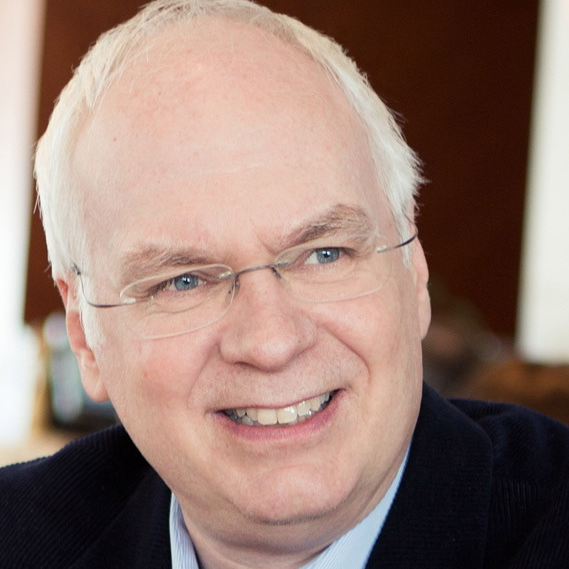Medical and Translational Research Day
Introduction
The Medical & Translational Research Day, organized by the Centre Hospitalier de Luxembourg (CHL) and the Luxembourg Institute of Health (LIH), aims to raise awareness of clinical, scientific, and medical research, as well as the careers related to these fields. Clinical research, its latest developments, and the interaction between clinicians and researchers will be highlighted and illustrated through 3 presentations as well as 3 workshops (pre-selection required). This day is primarily intended for senior secondary school students. To ensure that as many students as possible can take part, students will have the option of attending either the morning or afternoon sessions in Strassen-Luxembourg.
Space is limited, so we can’t guarantee that we’ll be able to accept all registration requests.
The day will be held in German, English, and French.
For further information or to request pre-registration, please contact tania.zamboni@lih.lu or +352 26 970 800.
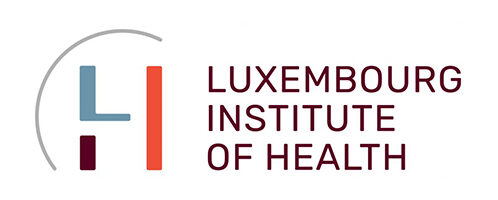
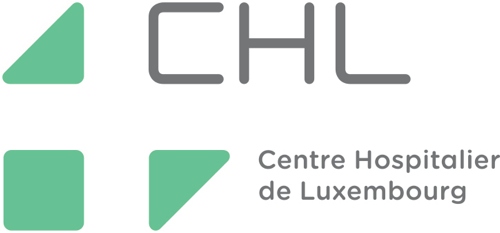
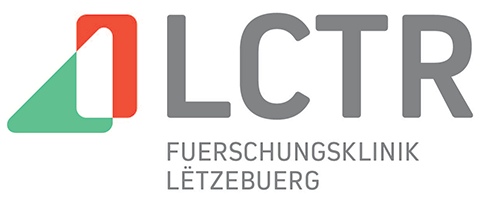
Programme
Speakers and abstracts
Mot de bienvenue
Prof Dr Guy BERCHEM, Directeur délégué à la Recherche, CHL
Diplômé de l’Université Libre de Bruxelles (ULB) en 1990.
Formation en oncologie médicale à l’Institut Jules Bordet à Bruxelles Cancer Center (Jean Klastersky et Martine Piccart) et formation de laboratoire au Lombardi Cancer Center, Université de Georgetown à Washington DC (Mark Lippman et Edward Gelman), où il a contribué à la compréhension des mécanismes apoptotiques dans le cancer de la prostate hormono-sensible et résistant et a participé à des études sur l’angiogenèse dans le cancer du sein.
Par la suite, il a travaillé à l’Institut Jules Bordet comme résident et comme chercheur au laboratoire du Prof. Arsène Burny avec le Prof. Dominique Bron sur un projet d’apoptose dans la Leucémie Lymphoïde Chronique.
Thèse de PhD (2014) intitulée: « Rôle du stress hypoxique dans la régulation de la réponse immunitaire anti-tumorale des lymphocytes “Natural Killer” » a l’université Paris Sud (XI) sous la direction du Prof. Salem Chouaib (INSERM 753, Gustave Roussy).
En 2003, il a fondé le Laboratoire “d’Hémato-Cancérologie Expérimentale “du CRP-Santé qu’il dirige encore aujourd’hui. Il détient également une position clinique comme spécialiste en Oncologie Médicale au CHL.
Son travail clinique est axé sur le cancer du poumon, ORL, gastro-intestinal et neurologique, ainsi que la leucémie lymphocytaire chronique (CLL) et le myélome multiple (MM). Il a participé à de nombreuses études nationales et internationales dans ces maladies.
Le travail de son laboratoire a mis l’accent sur une meilleure compréhension des mécanismes de la mort cellulaire et la survie des cellules MM et CLL, ainsi que sur l’immunothérapie médiée par les cellules NK. Un autre aspect de son laboratoire est le développement de biomarqueurs génomiques (MicroRNA) et protéomiques dans le cancer du poumon et de la CLL. Ce travail est réalisé en collaboration avec la Biobanque Luxembourg intégré (IBBL) et vise à promouvoir la médecine personnalisée au Luxembourg.
En 2002, il a co-fondé la Société Luxembourgeoise d’Oncologie et depuis 2008, il est l’un des délégués du Luxembourg à l’European Medicines Agency EMA. En 2012, il a été nommé président du conseil scientifique du Laboratoire National de Santé du Luxembourg.
Manon GANTENBEIN PhD, Responsable CIEC & CPMO, LIH
Manon Gantenbein is currently heading the Clinical and Epidemiological Investigation Center (CIEC) and the Clinical Project Management Office (CPMO) at the Luxembourg Institute of Health. The CIEC is a nationwide clinical research unit, promoting clinical research in Luxembourg and supporting local projects initiated by researchers and principal investigators. She holds a PhD in Pharmacology, and coordinated, in previous positions in a major pharmaceutical company and Clinical Research Organization, several multicentre registration trials in Multiple Sclerosis among others as well as Early Development phase I studies in Parkinson Disease and joined the CIEC in 2009 as a Coordinator. Manon contributed to the development of the unit by interacting with local health care professionals, researchers and scientists and provided operational expertise to the set-up of numerous clinical research projects in various fields (oncology, infectious diseases including covid 19, pneumology, nutrition, …). She has a sound knowledge of clinical research with past working experience in France, Germany and Luxembourg. For the past years Manon was able to contribute consistently to the set-up of national cohorts, clinical research projects initiated by national /international investigators. Manon is further currently contributing to a specific workgroup on research within the National Cancer Plan.
Precision PDX
Médecine personnalisée pour patients atteints de tumeurs cérébrales : de la recherche fondamentale aux modèles précliniques.
Abstract : Brain and spinal cord tumors are rare and diverse. Benign tumors can be fully removed with surgery, requiring no additional treatment. However, other tumors are highly aggressive and infiltrate heavily the brain issue, which does not allow for complete removal during surgery. These aggressive tumors do not respond well to radiation and chemotherapy, making them difficult to cure. We urgently need new and better ways to treat them. In the PRECISION-PDX study, we collect these rare tumors at CHL to build a national biobank collection in Luxembourg. Patient-donated tumor tissue is exceptionally valuable for research as it allows us to discover novel biomarkers and develop innovative and personalized treatments for patients. We also use these tumor samples to create patient avatars in laboratory that help us to test new drugs, speeding up the search for effective treatments.
Dr Frank HERTEL, Priv-doz., Service de Neurochirurgie CHL
Dr. Frank Hertel is heading the National Center of Neurosurgery at the Centre Hospitalier de Luxembourg (CHL). Besides his medical and PhD training as a specialist in neurosurgery, he has a background in electrical engineering and experience in deep brain stimulation. His research focuses on innovative technologies supporting brain surgeries such as computer aided neurosurgery, spectroscopic imaging and precision MRI.
Anna GOLEBIEWSKA PhD, NORLUX Neuro-Oncology Laboratory LIH
Dr Anna Golebiewska is Group leader of the NORLUX Neuro-Oncology laboratory at the Department of Cancer Research, Luxembourg Institute of Health. She has a background in molecular and cellular biology and obtained her PhD in stem cell research. Her work focuses on understanding brain tumor biology. Her current projects aim to tackle intrinsic plasticity allowing brain tumor cells to adapt and survive external pressures from brain environment and treatment. Her lab developed a large collection of brain tumor organoids and xenografts for preclinical research and drug testing.
Diana PAUSEIRO, Infirmière de Recherche Clinique, CIEC LIH
Experimental Neuro-oncology
Outils d’imagerie et caractérisation immunologique pour le développement de nouvelles thérapies ciblant les tumeurs cérébrales.
Abstract :
La mise au point de nouveaux médicaments et traitements est un processus long qui passe par de nombreuses étapes, incluant la recherche fondamentale, la mise au point de nouvelles molécules en laboratoire et différentes étapes de validation pour apprécier l’efficacité des produits, leur bio-distribution pour s’assurer qu’une fois intégrés dans l’organisme ils atteignent bien leur cible, et l’analyse de la toxicité et les effets secondaires éventuels.
Dans cette discussion, les auteurs vous présenteront quelques outils utilisés par les chercheurs lors de la mise au point de nouveaux traitements. Dans un contexte de neuro-oncologie, différentes techniques d’imagerie médicale telles l’imagerie par résonance magnétique (IRM) et la tomographie à émission positonique (TEP) permettent par exemple la détection et la caractérisation des tumeurs cérébrales, et l’évaluation de l’efficacité des traitements. L’analyse des images en faisant appel à l’intelligence artificielle permet en outre d’affiner les analyses et d’extraire des images des informations que l’œil humain ne peut détecter.
Dans un autre exemple de mise au point d’outils diagnostiques et de traitements d’immunothérapie, la recherche fait usage de prélèvements sanguins, appelés biopsies liquides, pour analyser les signatures immunologiques des monocytes sanguins. Des échantillons sont alors prélevés chez des donneurs sains, en tant qu’échantillons de contrôle, et comparés avec les extraits correspondants de patients atteints de tumeur cérébrale. Le profil immunologique du sang chez ces patients par rapport aux donneurs sains représente une signature de la tumeur, qui peut être utilisée pour des objectifs importants, notamment la stratification des patients, le diagnostic précoce, la prédiction de l’efficacité de l’immunothérapie et le développement de nouveaux traitements.
Olivier KEUNEN PhD, Platform in Vivo Imaging & Translational Radiomics, LIH
Olivier is a researcher in medical imaging and artificial intelligence who has been working at the LIH since 2002. He obtained a polytechnic engineering degree from the University of Liège (Belgium) and a PhD degree from the University of Bergen (Norway). Before joining the LIH, he worked in the private sector as IT consultant where he developed computerized data analysis techniques. Olivier was also a visiting researcher at Stanford University (US), where he worked on innovative methods for local treatment delivery to the brain, using ultrasounds, microbubbles and magnetic resonance imaging (MRI). With his research group, he operates a small animals imaging platform to support experimental research, while developing new methods for medical images analysis using artificial intelligence.
Alessandro MICHELUCCI PhD, Neuro-Immunology Group, LIH
Highly motivated scientist dedicated at uncovering the complex interactions between the nervous and the immune system under tumorigenic, inflammatory and neurodegenerative conditions to identify targets to modulate neuroinflammation according to specific neurological diseases. Specifically, I seek to contribute answering key research questions, including (a) when do central nervous system (CNS) immune cells alter their programmes, (b) where in the CNS, (c) are they heterogeneous, (d) do they present disease-specific signatures, (e) how they relate to peripheral immune cells and (f) can we manipulate them for therapeutic purposes? A better understanding of CNS immune cells and the subsequent ability to reactivate immune-suppressed phenotypes into reactive anti-tumorigenic cells in brain tumours or render chronically activated neurotoxic cells neuroprotective under neurodegenerative conditions will pave the way to novel therapeutic applications. To achieve these objectives, my current research focus and activities span across three overlapping and linked areas: immunooncology, neuroinflammation and immunometabolism. I strive to integrate basic with clinical research to translate basic findings into clinical applications.
My career as scientist started by obtaining a university degree in Biological Sciences at the University of Pisa (Italy) followed by a Ph.D. in Neurosciences at the Université catholique de Louvain (Belgium) in collaboration with the Laboratory of Neurobiology at the University of Luxembourg (UL). The focus of my 4-year Ph.D. project was around the plasticity and heterogeneity of microglia. During the entire Ph.D. period, I also gained experience in academic teaching. Hired as Research Assistant, I held lectures (4h/week) in theoretical and practical biology to 1st year students of the Bachelor in Medicine at UL. Following my doctoral studies, I had a 2-year postdoctoral appointment in the group of Prof Buckley at King’s College London (UK) where I studied the effect of inflammation on specific astrocytic phenotypes at the transcriptional and epigenetic level. From 2011 to 2015, I was a Research Associate in the group of Prof Balling at the Luxembourg Centre for Systems Biomedicine (LCSB) where I characterized microglia and macrophages at the transcriptional and metabolic level under inflammatory and neurodegenerative conditions. In 2015, I joined the NORLUX Neuro-Oncology Laboratory at the Luxembourg Institute of Health (LIH) directed by Prof Niclou where I investigated the phenotypic adaptation of tumour-associated microglia/macrophages in Glioblastoma and pursued previous projects related to glial cells and metabolic reprogramming. In 2019, I was appointed Leader of the Neuro-Immunology Group at LIH’s Department of Cancer Research, where I have established my own line of interdisciplinary and translational research centred on the cellular and molecular mechanisms underlying tumorigenic and neurodegenerative processes, with a specific focus on myeloid cells. The skills I acquired throughout my career on the main cellular players of neuroinflammation, including microglia, astrocytes and peripheral immune cells, together with different layers of molecular insights, such as epigenetic, transcriptional and metabolomics analyses, have given me with a comprehensive overview of the inflammatory processes underlying neurodegenerative diseases and brain tumours.
NVDX-Spine
Etude de Phase I visant à évaluer l’efficacité d’un nouvel implant osseux (NVDX3) d’origine allogénique humaine, pour le traitement de lésions de la colonne vertébrale.
Abstract
Dr Anas DYAB, Service de Neurochirurgie, CHL
Le docteur Anas Dyab est médecin dans le service de Neurochirurgie
Tumor Stroma Interactions (TSI)
Collecte d’échantillons de patients atteints de leucémie et de lymphome afin d’étudier les cellules tumorales et leur microenvironnement.
Abstract : Chronic Lymphocytic leukemia (CLL) represents the most frequent type of leukemia in adults. Despite advances in research, CLL remains an incurable disorder and a high burden for the healthcare system, thus the development of alternative therapies is urgently awaited. Survival, proliferation and resistance of CLL cells to therapies are highly dependent on the microenvironment in lymphoid organs. In particular, interactions with surrounding cells that can promote immuno-suppression are key to leukemia progression. In recent years, immunotherapy, which activates the immune system to fight tumors has revolutionized the management of cancer patients. However, only a limited number of patients respond to these new therapies and those are not yet approved for all types of cancer.
It was demonstrated by our group that dual immune checkpoint blockade-based immunotherapy was efficient in the treatment of a pre-clinical CLL mouse model. However, direct translation of these findings into clinics is difficult due to the lack of adequate human CLL-based models. Here, we aim at developing novel preclinical models of CLL including in vivo patient-derived xenografts (PDX) in mice and 3D culture systems to mimic the disease in vitro. Harnessing these techniques will enable to test several immunotherapeutic combinations aiming at reactivating the exhausted immune system. In addition, this allows screening of new therapies in complex models recapitulating the tumor and its microenvironment in a precision medicine based approach.
Dr Sébastien RINALDETTI, Service d’ Hémato-Oncologie, CHL
Sébastien Rinaldetti a étudié à l’Université de Médecine d’Innsbruck (2007-2013) et a été doctorant à l’Institut Tyrolien de Recherche sur le Cancer, diplôme 2013 ‘Dr.med.univ.’. Stages cliniques à l’Université Libre de Bruxelles (ULB) et au Centre Hospitalier Universitaire Montpellier.
Formation spécialisée en hématologie et oncologie à la Faculté de Médecine de Mannheim, Université de Heidelberg (Pr W.K. Hofmann) avec des rotations cliniques entre autres à l’unité de soins intensifs et au centre de greffe de moelle osseuse. Deuxième doctorat, Dr.med. (Summa Cum Laude) auprès de la Ruprecht-Karls-Universität Heidelberg. Dans le cadre de ses travaux scientifiques au Centre d’Excellence de Leucémie Myéloïde Chronique (Pr S. Saussele) et au Laboratoire de Recherche en Urologie Oncologique (Pr P. Erben) à Mannheim, Sébastien Rinaldetti s’est spécialisé dans le domaine de la médecine personnalisée et translationnelle. Participation à des études cliniques internationales.
Postdoctorat (2018-2019) aux États-Unis à l’Université du Colorado, Anschutz Medical Campus (Pr D. Theodorescu & Pr D. LaBarbera). Recherche dans le domaine de la découverte de médicaments anticancéreux ciblés.
Sébastien Rinaldetti est l’auteur de la ‘Démographie médicale du Luxembourg 2011’ mandatée par le Ministère de la Santé. Il est un ancien membre du comité fondateur du ‘Bachelor en Médecine’ de l’Université du Luxembourg.
Il est membre de sociétés scientifiques et cliniques internationales (ESMO, EHA, ASCO, DGHO, AACR) et reviseur de nombreuses revues scientifiques (dont Blood, Cancers, Nature Publishing Group). Publication de nombreux articles scientifiques dans des revues à comité de lecture, sub.: https://pubmed.ncbi.nlm.nih.gov/?term=rinaldetti+s&sort=pubdate
Vanessa KLAPP Phd student, TSI LIH
Vanessa Klapp joined the Tumor Stroma Interactions (TSI) group at the Department of Cancer Research (DoCR) at the Luxembourg Institute of Health (LIH) in 2022 as a PhD student within the FNR-PRIDE funded i2TRON (integrating immune strategies for Translational Research in Oncology and Neurology) doctoral training unit. Before starting her PhD, Vanessa completed her B.Sc. and M.Sc. in pharmaceutical sciences at the Ludwig-Maximilians University of Munich (LMU, Munich, Germany). During her university studies, Vanessa worked in different research groups in Edmonton (Canada), Munich (Germany), Luxembourg and New York (USA), where she gained valuable experience focusing on different aspects in the field of cancer research. Vanessa has a long-standing research interest in immuno-oncology in the context of novel therapeutic approaches for cancer treatment. In her PhD project, she aims on developing improved patient-derived models for chronic lymphocytic leukaemia (CLL) in a translational approach towards personalized treatments for CLL. These novel preclinical models will enable testing several immunotherapeutic combinations aiming at reactivating the exhausted immune system. Moreover, this offers the possibility to screen new therapies in models recapitulating the tumor and its microenvironment while taking into account the complexity and heterogeneity found in CLL patients.
Padova
Etude visant à évaluer l’efficacité et la sécurité du prasinezumab intraveineux chez les participants atteints de la maladie de Parkinson au stade précoce.
Abstract
La maladie de Parkinson est un trouble neurodégénératif progressif qui affecte principalement les neurones producteurs de dopamine (dits dopaminergiques), entraînant une baisse des niveaux de cette substance et l’apparition de symptômes tels que les tremblements, la raideur et des troubles de la motricité. Etant donné l’absence d’un traitement résolutif, pratiquement tous les patients atteints de la maladie de Parkinson sont soumis à un traitement symptomatique efficace de référence avec la lévodopa, ce qui rétablit les niveaux de dopamine, contrôlant ainsi certains des symptômes.
Dans ce contexte, l’étude clinique « PADOVA » vise à évaluer si le nouveau traitement « Prasinezumab », développé par la société pharmaceutique Roche, peut bloquer la progression des symptômes motrices, ce que représente un espoir pour les patients récemment diagnostiqué de Parkinson.
Dr Deborah MCINTYRE, Neurologue LIH
Médecin spécialiste en neurologie
Neurologue agrée au Centre Hospitalier du Nord
Senior Physician-Scientist in Neurology at Luxembourg Institute of Health, Transversal Translational Medicine (TTM)
Member of the American Academy of Neurology
Fellow of the European Board of Neurology
Ali ZNATI, Attaché de recherche clinique, CIEC LIH
Ingénieur en Biotechnologie, Senior CRA
NVDX-radius
Étude de validation de concept, menée pour la première fois chez l’homme, avec NVDX3, un produit de comblement osseux ostéogénique d’origine allogénique humaine, dans le traitement des fractures du radius distal chez l’adulte.
Abstract :
Fractures of the distal radius (DRF) often referred to as “wrist fractures”, are common in both children and adults. Most of the fractures are caused by a fall on the outstretched hand with the wrist in dorsiflexion.
DRF is one of the most common fractures with an incidence of 195.2/100,000 persons per year. The distributive pattern of these injuries is bimodal, affecting young (predominantly male) adults through high-energy falls and elderly (predominantly female) adults through low-energy falls and presence of osteoporosis. Besides age (e.g.older women with osteoporosis) and gender (e.g. young males), lifestyle such as playing/sporting activities and motor vehicle accidents also has an impact of the risk ratio of DRF.
Potential complications: Acute DRF results in pain, limitations in disability stress, and the potential inability to work. Delayed fracture healing permanent loss in function, or continuous pain may cause substantial morbidity and impact on social and professional activities.
Treatment: The aim of treatment is pain relief and return of function while weighing the risks and benefits of nonoperative and operative treatment. There are multiple treatment options, including closed reduction and cast immobilization, percutaneous K-wire fixation, fixation with volar or dorsal plates (locking or nonlocking), bridge plating, use of an external fixator, or a combination of these techniques.
Volar plating is widely used because of its stability, early movement, and quick return to activity. This technique allows to perform a satisfactory surgical treatment in almost every kind of wrist fracture with a low complication rate providing an immediate stable fixation and distal radius fragment collapse prevention, even in most severe osteoporotic cases.
Particularly in people with osteoporotic bone, metaphyseal comminution and/or high impaction may result in a bony void in the distal radius that may be associated with loss of reduction and malunion. This defect can be filled with some biocompatible material; for example, an autograft (autogenous bone graft) that is obtained from the patients themselves.
A common alternative is an allograft (allogenic bone graft), obtained from cadaveric donors or live donors undergoing procedures such as total hip replacement.
Experimental cell-based approaches are considered the best suitable emerging strategies in several regenerative medicine application, including bone regeneration. In particular, mesenchymal stem cells have been widely exploited for this purpose, being multipotent cells capable of efficient osteogenic potential
Description of Study Treatment: NVDX3 is an osteogenic bone void filler of human allogenic origin. This lyophilized and gamma-irradiated tissue engineered product is composed of hydroxyapatite/beta-tricalcium phosphate (HA/βTCP) particles embedded in an extracellular matrix, various biologically active growth factors (including but not limited to OPG, IGF1, VEGF, CTNNB1, OB and COLX), and non-viable osteogenic cells.
Prof Dr Torsten GERICH, Service de Traumatologie, CHL
- Studium der Humanmedizin Hannover und Bern 1985-1991
- Clinical Exam of the Educational Commission for Foreign Medical Graduates 1991
- Ausbildung an der Unfallchirurgischen Klinik der Medizinischen Hochschule Hannover unter Prof. Tscherne und Prof. Krettek 1992-2007 zum Facharzt für Orthopädie und Spezielle Unfallchirurgie
- Ärztlicher Leiter der Zentralen Notaufnahme der Medizinischen Hochschule Hannover 2006-2007
- Research Fellow University of Pittsburgh School of Medicine 1995
- Außerplanmäßiger Professor 2005
- Adavanced Trauma Life Support Provider des American College of Surgeons 2005
- European Board of Surgery, Traumatology 2006
- Präsident der AO Belgien Luxembourg 2011-2013
- Stellvertretender Sprecher des Traumanetzwerkes Saar-Lor-Lux der Deutschen Gesellschaft für Unfallchirurgie
- Mitglied des Vorstandes der Traumastiftung Medizinische Hochschule Hannover
- Reviewer: Bone and Joint, Open Access Journal
- Chef de Service der Unfallchirurgischen Klinik des CHL seit 2007
- Neben der allgemeinen Traumatologie der Gelenke und der Beckenchirurgie beschäftigt sich Prof. Gerich intensiv mit Osteoporose-Erkrankungen.
- Ein weiteres Spezialgebiet sind Folgezustände nach Verletzungen und Komplikationen nach vorangegangenen Operationen bei denen Korrekturen ode rein Gelenkersatz vorgenommen warden muss..
- Member of the AO Educational Commission for Europe and Southern Africa (AO-TESA)
Workshop 1: La recherche clinique dans les unités de soins au CHL
Le rôle de l’infirmière de recherche au CHL: présentation du rôle propre de l’infirmier dans un projet de recherche médical ou soignant; focus sur quelques projet en cours ou en préparation au CHL. Illustration du parcours d’un professionnel de santé (kinésithérapeute) en tant que clinicien et chercheur – exemple d’un projet de recherche multidisciplinaire – LetsTeleRehab.
Patrick FEIEREISEN, PT, PhD, Attaché à la Direction des Soins, CHL
Licence en kinésithérapie et en kinésithérapie en milieu sportif à l’ULB,
diplôme d’études approfondies et doctorat en sciences de la motricité à l’ULB (2014)
Kinésithérapeute depuis 1994, travaillant au CHL depuis 1996, chef d’unité Physiothérapie en 2009, Attaché Direction des soins en 2020
Publications comme auteur principal ou co-auteur dans le domaine des méthodes de rééducation à l’effort des patients insuffisants cardiaque à fraction d’éjection réduite
Aurélie ADAMSKI, Infirmière de recherche, Service de Pédiatrie, CHL
Je suis infirmière diplômée d’état depuis 2007, puis j’ai obtenu mon diplôme de puéricultrice en 2008, en France.
J’ai débuté ma carrière au Centre Hospitalier Universitaire de Lille (France) en cardiologie infantile puis j’ai travaillé en réanimation pédiatrique.
En 2011, j’ai intégré le service de néonatologie et de soins intensifs pédiatriques en tant qu’infirmière en pédiatrie.
En 2015, j’ai obtenu un Diplôme Inter-Universitaire de Soins en Réanimation.
Depuis 2 ans je travaille en tant qu’infirmière de Recherche Clinique au Centre Hospitalier de Luxembourg sur diverses études (EARLIE, NEEDS, eNEWBORN…).
Depuis septembre 2023, je poursuis des études en Master 1 : Santé Publique : parcours Épidémiologie, Recherche Clinique et Evaluation, à l’Université de Lorraine (NANCY).
- Publication comme co-auteur pour l’étude EARLIE : étude pilote sur le dépistage de l’hypercholestérolémie au Luxembourg.
- Prix du meilleur abstract “pédiatrique” Innovation et Recherche Paramédicale pour l’étude NEEDS, par la SRLF lors du congrès Réanimation à Paris en Juin 2023.
Workshop 2: Follow the sample
Participation aux quatre étapes cruciales du parcours de l’échantillon biologique, du donneur au chercheur : Préparation – Collecte – Traitement – Conservation et distribution.
Katy BEAUMONT, Head BioRepository, Integrated Biobank Luxembourg IBBL, LIH
Wim AMMERLAAN, Head Biorefinery, Integrated Biobank Luxembourg IBBL, LIH
Olivia ROLAND, Biorefinery Technician, Integrated Biobank Luxembourg IBBL, LIH
Saskia MEDEIROS NICKEL, Team Leader BioRespository, Integrated Biobank Luxembourg IBBL, LIH
Workshop 3: Voyage au coeur de la Recherche Clinique
Entretien avec les différents interlocuteurs dans une étude clinique: exemple d’une étude clinique en cours – PADOVA.
Abstract :
La recherche clinique est la prolongation de la recherche fondamentale, elle correspond aux études scientifiques réalisées sur la personne humaine, en vue du développement des connaissances biologiques ou médicales.
La recherche clinique peut se faire aussi bien sur des patients ou des volontaires sains. La recherche clinique ne se limite pas à étudier de nouveaux traitements, mais aussi dispositifs médicaux, tests diagnostiques, et même de nouvelles procédures de prise en charge. La finalité de la recherche clinique est de déterminer la sécurité, la tolérance ou l’efficacité d’un produit de santé au patients.
Ce n’est que depuis peu que le patient est le centre de l’étude clinique. En effet la priorité de toute recherches clinique n’est pas l’objectif de l’étude mais la protection du patient. Ainsi les essais cliniques sont soumis à une règlementation spécifique et sont menés selon des protocoles scientifiques rigoureux, le recueil du consentement des personnes qui participent à la recherche est primordial et la prise de mesures pour protéger les personnes qui se prêtent à la recherche sont essentiels.
Pour qu’une étude clinique soit menée correctement en plus du personnel médical d’autre intervenant gravite autour comme le CRA.
Nous étudierons par la suite un exemple concret d’une étude clinique en court, l’étude clinique PADOVA : « Etude visant à évaluer l’efficacité et la sécurité du prasinezumab intraveineux chez les participants atteints de la maladie de Parkinson au stade précoce.. »
Nasséra AOUALI PhD, Attachée de recherche clinique, Centre d’Investigation Clinique & Epidémiologique CIEC, LIH
Nassera Aouali is researcher in Cell Biology and works as a Clinical Research Associate (CRA) at CIEC LIH since November 2020. She obtained her title of Ph. D in Biophysics at Université de Reims Champagne-Ardennes (France). After an experience of 1.5 years in United State as a postdoc in genetic at Roswell Park Cancer Institute Buffalo (New York). She came back in Europe and did a second postdoc in CRP-Santé Luxembourg in cell biology. Finally, she got a permanent position as researcher in cell biology in the same company for 14 years.
Jérôme GRAAS, Responsable des infirmiers de recherche clinique, Centre d’Investigation Clinique & Epidémiologique CIEC, LIH
Ali ZNATI, Attaché de Recherche Clinique, Centre d’Investigation Clinique & Epidémiologique CIEC, LIH
Ingénieur en Biotechnologie, Senior CRA
Overview of the previous editions
2016
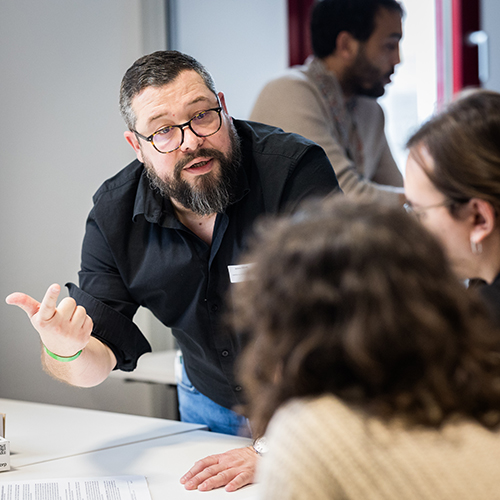
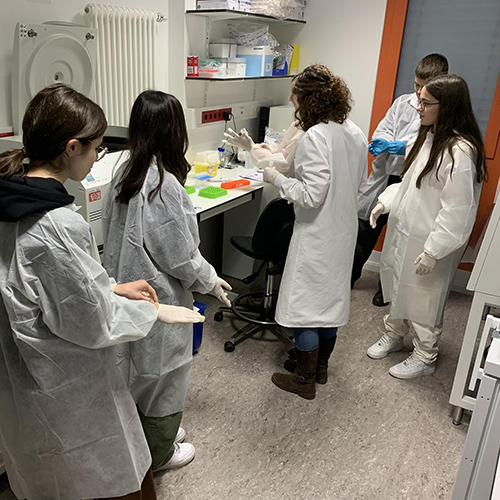
LOCATION
CHL Amphitheatre
4, rue Nicolas Ernest Barblé,
L-1210 Luxembourg
CONTACT & REGISTRATIONS
Seats are limited, so we can’t guarantee that we’ll be able to accept all registration requests.
3 workshops of prior choice: biobanking, clinical research careers, laboratory.
For further information or pre-registration, please contact tania.zamboni@lih.lu or +352 26 970 800.
DATA PRIVACY
Read more about the “Data Protection Notice: processing of personal data in the scope of events’ management”.

